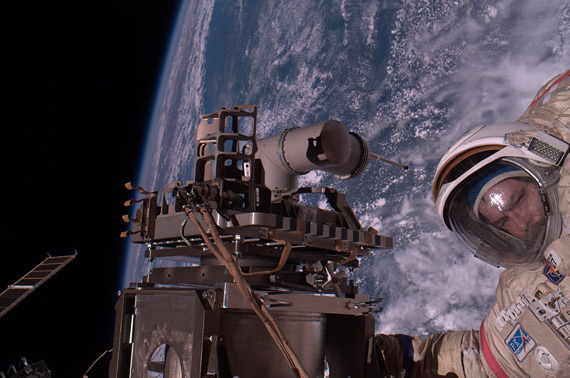The first German space robotics experiment ended on 15 Nov 2010. The Rokviss robotic arm developed by the German Aerospace Centre was removed by Russian cosmonauts Fyodor Yurichikhin and Oleg Skripochka during a space walk. It had been attached to the experimental platform on the Russian service module Svezda.
The robotic arm was carried by the Russian cosmonauts inside the International Space Station (ISS). The arm had been fixed into position by the team from the DLR Robotics and Mechatronics Center in Oberpfaffenhofen. The position was critical for the successful transport of the Rokviss robotic arm inside the ISS.
 Close-up image of Rokviss on the International Space Station. Image Credit. German Aerospace Center (DLR)
Close-up image of Rokviss on the International Space Station. Image Credit. German Aerospace Center (DLR)
The robotic arm has been operational for the last five and half years. It has been transmitting data to the DLR Rokviss project team based in Oberpfaffenhofen. The robotic arm was used to test new hardware and robot control concepts during actual mission operations. In future, this technology will support astronauts and lighten their workload during complex tasks, and it will also help to repair satellites in orbit. Conditions in space are radically different from those on Earth; there is no air and temperatures inside the robot joints range from minus 20 to plus 60 degrees Celsius.
The arm is now scheduled for disassembly by cosmonauts. This is the only way that the arm will fit into the small storage space in the Soyuz capsule in which it will be returned to Earth.